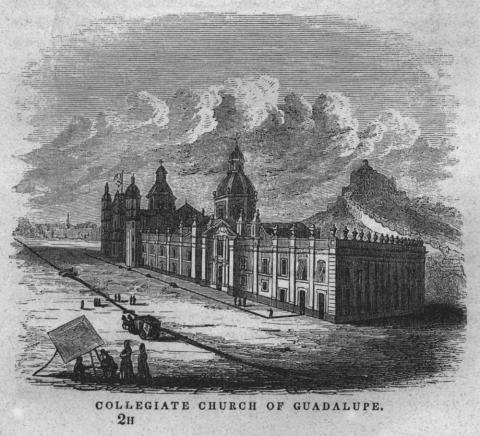Biographies | Correspondence | Images | Maps | Speeches & Oration
After the fall of Vera Cruz, the Polk administration decided to send to Mexico a peace commissioner who would have the authority to negotiate a treaty with the Mexican government. For this important assignment it chose Nicholas Trist, chief clerk of the State Department. Fluent in Spanish, he had lived for several years in Havana.
The administration ordered Trist to demand the cession of Upper California and New Mexico, and to establish the Río Grande as the southern boundary of Texas. Trist was also authorized to negotiate for the acquisition of Lower California and the right of passage for U.S. citizens across the Tehuantepec isthmus. In exchange the United States would pay up to $30 million to Mexico and assume up to $3 million in U.S. citizens' claims against Mexico.
The first round of negotiations began in August, 1847, with Scott's army camped outside the gates of Mexico City. Trist broke off peace talks when Mexican negotiators refused to cede New Mexico and agreed to give up only a small portion of northern California. Convinced that any further contact between Trist and Mexican negotiators would only create the impression that the United States was willing to conclude a peace under any terms, Polk decided to recall Trist; any future negotiations would now have to be initiated by the government of Mexico.
By the time Trist received his recall notice on November 16, however, the situation in Mexico City had changed dramatically. The capital had fallen to Scott's troops, and a new interim president, Manuel de la Peña y Peña, urged Trist to remain and complete his mission. Hoping to persuade the administration of the wisdom of such a course, Trist composed a letter more than 60 pages long explaining his decision to disregard his recall notice and enter negotiations with the new government.
The U.S. president was stunned by Trist's insubordination. Receiving the diplomat's memorandum in mid-January, an angry Polk ordered him removed from U.S. headquarters in Mexico City and informed the Mexican government that Trist no longer had diplomatic powers to draft a treaty.
By this time, however, negotiations were well underway between Trist and Mexican peace commissioners Bernardo Couto, Miguel de Atristain, and Luis Gonzaga Cuevas. Realizing that they could not expect more favorable terms from another administration representative, the commissioners agreed to Trist's terms.
On February 2, 1848, Nicholas Trist and Mexican peace commissioners signed the Treaty of Guadalupe Hidalgo. In the principal articles of the treaty, Mexico ceded Upper California and New Mexico to the United States, and agreed to recognize the Rio Grande as the boundary of Texas. In return, Mexico received $15 million, as well as the assumption of $3 million in unpaid claims of U.S. citizens against the Mexican government.
The Mexican peace commissioners were particularly keen to protect the rights of Mexican citizens in the ceded territories. According to the terms of the treaty, former Mexican nationals would receive U.S. citizenship and their property rights respected--provisions that were largely disregarded by U.S. courts in the years that followed. They also received a guarantee that the United States would assume responsibility for controlling hostile Indian incursions originating on the U.S. side of the border.
A copy of the treaty arrived in Washington on February 19. Polk now believed that the United States was entitled to a larger portion of Mexico's national domain, but he was also aware of the risks involved should he reject the product of Trist's negotiations. To demand that Mexico cede additional territory would almost certainly mean further hostilities, and Polk could not rely on the Whig controlled House to continue to vote for military appropriations. Even if the United States managed to obtain a larger territorial cession


